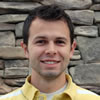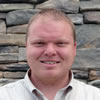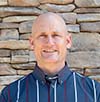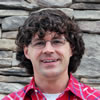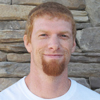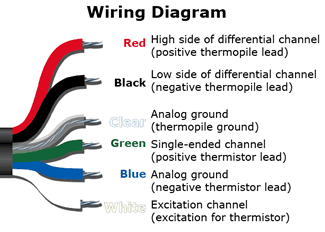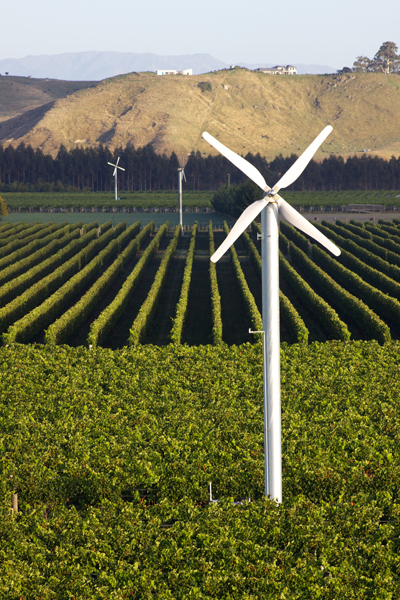I was working late one evening last week when the phone rang. I debated whether to answer it or not, because it was well after standard business hours and I was trying to finish a project, but I decided I needed a break from my computer screen. I picked up the phone and was greeted by a very polite gentleman, likely from somewhere in the southeastern U.S., as evidenced by the drawl and twang in his voice.
This potential customer said he had recently purchased an LED lighting system for his aquarium, but he was having trouble with coral burning. I’m definitely out of my realm of expertise when it comes to coral, but after talking to him about his proposed application of an Apogee quantum meter to measure the intensity of his new LED system, I figured out that the problem was that the light intensity was too high for the coral.
After explaining his desire to measure the intensity of his LED lighting system with a quantum meter, in hopes of achieving the proper light level for his coral, I started to explain how the quantum meter worked. It became clear, however, that he already knew the meter was designed to measure the total number of photons between 400 nm and 700 nm, the photosynthetically active radiation (PAR) range. What he really wanted to know was the accuracy of the quantum meter when used to measure LEDs. Not surprisingly, with the advancement of LED technology in recent years, this is a question frequently asked by customers.
A previous blog post provided some qualitative information regarding the use of a broadband device (i.e. quantum/PAR sensors or meters) to measure a narrowband radiation source (i.e. many LEDs currently on the market), where it was stated that a spectroradiometer is the best instrument to accurately measure light intensity of LEDs. While this is true, quantum meters can be used to measure LED intensity, and many customers use them for this application. As a result, an estimate of Apogee quantum meter accuracy for measuring LEDs is very practical.
The error associated with a quantum meter (or sensor) measurement of light from a source that has a different spectrum than the source used to calibrate the meter is called spectral error. Spectral error arises because no quantum meters perfectly match the defined quantum response, meaning they do not respond to all wavelengths of light equally between 400 nm and 700 nm. Apogee quantum meters are sensitive to wavelengths between approximately 370 nm and 665 nm, with a relatively flat response between 450 nm and 650 nm due to the blue pigment used in the diffuser (Figure 1). However, they are not equally sensitive to the wavelengths within the photosynthetically active range (Figure 1). In order to determine spectral error, the spectral responses of the quantum meter, calibration light source, and light source to be measured are required, along with some spectra-dependent calculations (for details, see Federer and Tanner, 1966; Ross and Sulev, 2000).
Apogee quantum sensors and meters for electric lighting are calibrated in a custom chamber filled with T5 cool white fluorescent lamps. LEDs have a very different spectral output than T5 lamps (Figures 2, 3, and 4), thus some degree of spectral error is expected. For the narrowband, broadband, and mixed LEDs shown below, spectral errors are 8 % or less. Apogee quantum sensors and meters are less sensitive to blue wavelengths (near 400 nm) compared to longer wavelengths, and thus read low under blue LEDs. Conversely, Apogee quantum sensors and meters are more sensitive to green and red wavelengths (above 500 nm) compared to blue wavelengths, and thus read high under green and red LEDs. The broadband white LEDs output a small proportion of radiation beyond the upper end of the Apogee quantum sensor/meter sensitivity range (665 nm), and thus yield low measurements for the white LEDs.
IMPORTANT NOTE: LEDs that output a large proportion of radiation above approximately 660 nm will read very low and should not be measured with an Apogee quantum sensor/meter.
I did my best to explain, over the phone, the three preceding paragraphs worth of information to the customer. He thanked me for my time, and then ordered a quantum meter the next day. After hanging up the phone following an after-hours tech support call, I was glad to have helped a customer, and even more glad to be inspired by one at the same time.
| LED |
Error [%] |
| Blue (448 nm peak, 10 nm FWHM) |
-8.5 |
| Green (524 nm peak, 15 nm FWHM) |
8.0 |
| Red (635 nm peak, 10 nm FWHM) |
6.9 |
| Cool White |
-2.0 |
| Neutral White |
-3.8 |
| Red, Blue Mixture |
4.9 |
| Red, Green, Blue Mixture |
5.6 |
Table 1: Theoretical Spectral Errors for Apogee Quantum Meter Measurements of Multiple LED Sources
 |
| Figure 1: Apogee quantum sensor/meter response (blue line) compared to defined quantum response (black line) of equal sensitivity at all wavelengths between 400 nm and 700 nm. |
 |
| Figure 2: T5 cool white fluorescent spectrum (lamp used by Apogee for electric light calibration of quantum meters; black line) compared to narrowband color LEDs (blue, green, red lines) and defined quantum response (gray line). |
 |
| Figure 3: T5 cool white fluorescent spectrum (lamp used by Apogee for electric light calibration of quantum meters; black line) compared to broadband white LEDs (cool white fluorescent – blue line, neutral white fluorescent – green line, warm white fluorescent – red line) and defined quantum response (gray line). |
 |
| Figure 4: T5 cool white fluorescent spectrum (lamp used by Apogee for electric light calibration of quantum meters; black line) compared to mixtures of narrowband color LEDs (red/blue – blue line, red/green/blue – red line) and defined quantum response (gray line). |
Federer, C.A. and C.B. Tanner, 1966. Sensors for measuring light available for photosynthesis. Ecology 47:654-657.
Ross, J. and M. Sulev, 2000. Sources of errors in measurements of PAR. Agricultural and Forest Meteorology 100:103-125.
Mark Blonquist
Chief Science Officer
 After months of work, our new website is finally up and running! Check it out at http://www.apogeeinstruments.com . If you're one of our valued partners, return customers, or product distributors, we encourage you to take a look around and see all the new feautures like: our expanded knowledge base, more detailed product information, a new and improved shopping cart, and more.
After months of work, our new website is finally up and running! Check it out at http://www.apogeeinstruments.com . If you're one of our valued partners, return customers, or product distributors, we encourage you to take a look around and see all the new feautures like: our expanded knowledge base, more detailed product information, a new and improved shopping cart, and more.




